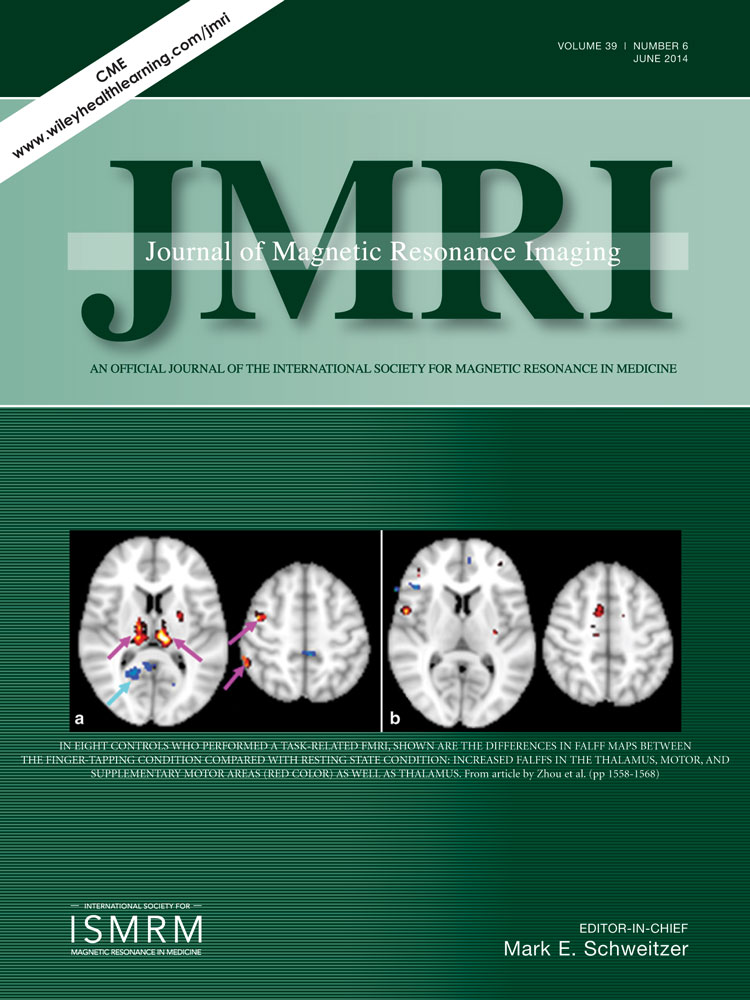Automated identification of brain new lesions in multiple sclerosis using subtraction images
Abstract
Purpose
To propose and evaluate a new automated method for the identification of new/enlarging multiple sclerosis (MS) lesions on subtracted images (SI). The subtraction of serially acquired images has shown great potential in assessing new/enlarging brain magnetic resonance imaging (MRI) lesions in MS patients. However, this approach relies on the manual definition of lesions, which is labor-intensive and subject to operator-dependent variability.
Materials and Methods
An overestimated mask of candidate SI lesions was created and then these hyperintense voxel clusters were filtered using specific constraints for extent, shape, and intensity. The method was tested on normal and pathological MRI datasets.
Results
The automated method did not detect hyperintense voxels on SI of healthy controls. SI lesions were identified manually and automatically in a multicenter MS dataset of 19 patients with paired MRI over 36 weeks. Sensitivity of the method was high (0.91) and in agreement with the results of manually defined SI lesions (Cohen's k = 0.82, 95% confidence interval [CI]: 0.77–0.87). On a second multicenter MS dataset of 103 patients with paired MRI over 76 weeks, the number of SI lesions detected automatically correlated with the number of gadolinium-enhancing lesions (r = 0.74).
Conclusion
The proposed method is robust, accurate, and sensitive and may be used with confidence in Phase II MS trials. J. Magn. Reson. Imaging 2014;39:1543–1549. © 2013 Wiley Periodicals, Inc.




